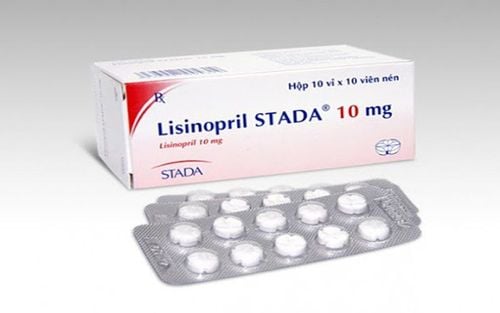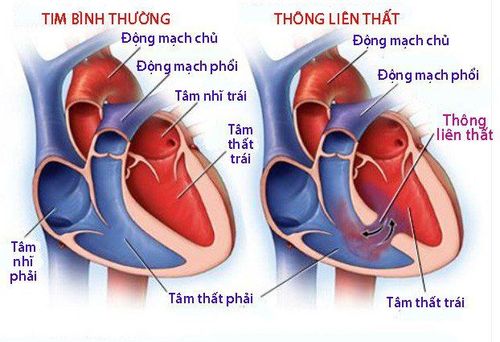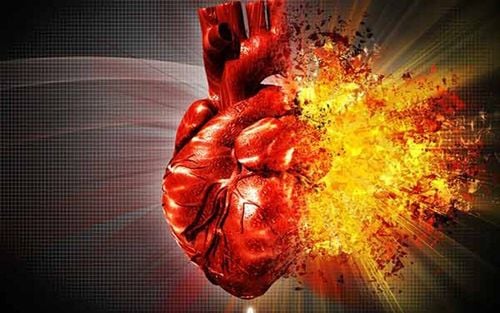This is an automatically translated article.
Posted by Specialist Doctor II Nguyen Bang Phong - Internal Medicine - Cardiovascular Intervention cum Head of Heart Failure Clinic - Heart Failure Intensive Care Clinic - Vinmec Times City International Hospital
Heart failure is a health problem that is increasingly concerned by people because of its increasing incidence and the consequences they leave for patients, families and society are not small. The prevalence of heart failure in the world ranges from 0.5 to 1.5% of the population depending on the country. Countries with high rates of heart failure are the United States, Europe, Singapore... Understanding the causes of heart failure will help patients have timely examination and treatment.
1. The rate of heart failure is getting higher and higher
The death rate from heart failure is comparable to the mortality rate of common cancers. After 5 years from the diagnosis of heart failure, about 50% of patients will die. In addition to the high mortality rate, the clinical picture of heart failure also makes the patients themselves miserable, especially those with late stage heart failure, which is a real burden on the family and society. .
Prevention is better than cure ! This basic, transparent motto of the medical profession proves to be even more true for heart failure. In order to effectively prevent heart failure, one of the important things is to identify the culprits that cause heart failure, thereby reducing the incidence of heart failure, detecting heart failure at an early stage for management and treatment. more effective treatment of heart failure.
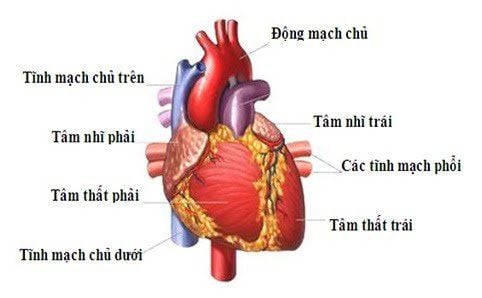
The heart has 4 chambers, the right side includes the right atrium and the right ventricle, which is responsible for receiving O2-poor blood from everywhere and then pumping it to the lungs to exchange, get O2 and release CO2 (the urinary cycle). The left side includes the left atrium and the left ventricle, responsible for receiving O2-rich blood from the lungs and then pumping it to feed the body (the great circulation). Based on this functional anatomical concept, heart failure is classified into two conditions: left heart failure and right heart failure. Left heart failure is more common than right heart failure. The causes of left heart failure are different from the causes of right heart failure, but are classified into two main groups: those that increase the burden on the heart and those that are in the myocardium.
2. Causes of left heart failure
2.1. Causes of increased burden on the left heart
The burden can be increased resistance, possibly volume overload. As resistance increases, the left heart must squeeze harder to overcome that resistance, over time it will fail. Causes of increased left heart resistance include:
Hypertension: A condition in which the pressure in the arteries increases, when the heart must squeeze harder. Hypertension is the leading cause of heart failure in the group of increased resistance. Currently, the rate of hypertension in the population is very high (about 25% of people over 25 years old), so if it is detected early and closely managed and treated, patients with high blood pressure will reduce significantly. risk of heart failure. Aortic valve stenosis: Increases resistance, leading to left heart failure. The greater the degree of narrowing, the faster it leads to heart failure. The mainstay of treatment for aortic stenosis is valve replacement surgery (open surgery). Transcatheter aortic valve replacement (TAVI) is increasingly proving beneficial compared to open surgery. Similar to this mechanism, coarctation of the aorta is a rare disease (causing upper extremity hypertension and lower extremity hypertension) that is also a cause of heart failure.

Hypertrophic cardiomyopathy with narrowing of the left ventricular outflow tract increases resistance on the heart's pumping path. In addition to severe manifestations of the disease such as ventricular arrhythmias, syncope or sudden death, due to thickening of the left ventricular wall and reduced synchronization, diastolic heart failure is very common. In addition, due to the need to squeeze harder to eject blood through the stenosis, in the late stage the left ventricle will be dilated and reduce the force of contraction, causing systolic heart failure. Volume overload means that the amount of blood returning to the left heart increases, causing it to pump more, for a long time, the heart will fail. Causes of volume overload of the left heart include:
Mitral regurgitation and aortic regurgitation: When 2 valves are open for a day, the amount of blood returning to the left ventricle will increase, causing it to dilate more and squeeze harder. , will gradually decline. Ventricular septal defect, and ductus arteriosus: Blood flow through the ventricular septal defect and ductus arteriosus increases blood flow to the lungs and then to the left heart, causing the left heart to dilate and squeeze more, leading to heart failure. The aorta-pulmonary malformation is also a cause of left heart failure under this mechanism. This disease is rare.
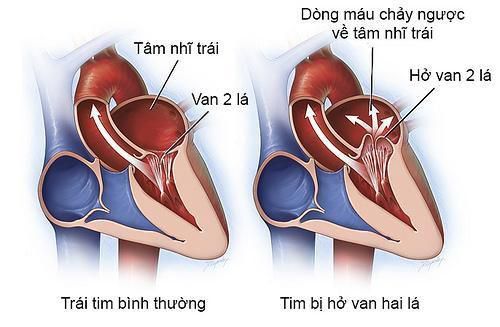
Arteriovenous catheterization : Usually a sequelae of trauma or by making a bridge in the arm for hemodialysis . Arteriovenous shunts increase blood flow to the veins, lungs and then to the left heart, dilating the left heart and making it work harder, leading to heart failure. Other less common causes of left heart failure have the same mechanism, such as rupture of an aneurysm of Valsalva's sinus into the right atrium, coronary artery leak into the pulmonary artery or into the right atrium or right ventricle. Some causes of increased blood flow to the heart such as hyperthyroidism, kidney failure, anemia also cause heart failure.
2.2. Causes of left heart failure due to myocardial damage
The leading cause of myocardial damage is ischemic heart disease, also known as coronary artery disease. Atherosclerosis narrows the coronary arteries, reducing the amount of blood that nourishes the heart muscle. In chronic O2 deficiency (chronic coronary artery disease), the myocardium responds with increased hibernation and programmed cell death. As a result of this remodeling, myocardial fibers lengthen and contractility is reduced. The most obvious effects of this process are: the left ventricle will dilate and contractility will decrease (systolic heart failure). When coronary atherosclerotic plaque ruptures, it initiates the process of coagulation and platelet plug formation. It is this platelet plug that causes acute myocardial ischemia, clinically called acute coronary syndrome - acute myocardial infarction. When there is an acute myocardial infarction, there is an area of the myocardium that is necrotic. In addition, there is an area of the myocardium that is paralyzed. Without effective and timely reperfusion, this remodeling will result in loss of myocardial fibers or a severe reduction in contractility.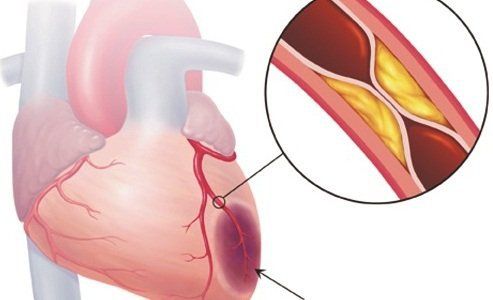
Dilated cardiomyopathy, viral and bacterial myocarditis, alcoholic cardiomyopathy, perinatal cardiomyopathy ... are also causes of myocardial damage, leading to heart failure.
In addition to the two main groups that cause left heart failure above, there are some other causes of left heart failure such as 3rd degree atrioventricular block (bradycardia), hyperthyroidism (tachycardia), prolonged vitamin B1 deficiency (Berium - Beri disease). . Restrictive cardiomyopathy, diabetes leading to diastolic heart failure...
3. Causes of right heart failure
3.1. Causes of increased burden on the right heart
Causes of increased resistance to the right heart:
Left heart failure: Left heart failure causes blood stasis in the lungs, causing pulmonary artery pressure to increase, leading to increased resistance to the right heart. It is the leading cause of right heart failure. Left heart failure + right heart failure will become total heart failure. Right ventricular outflow tract stenosis including pulmonary valve stenosis. This is also the cause of increased resistance to the right heart, leading to right heart failure. Chronic obstructive pulmonary disease, restrictive lung disease, and bronchial asthma are also quite common causes of increased resistance to the right heart, leading to right heart failure: chronic cardiopulmonary disease. Causes of right heart volume overload:
Tricuspid regurgitation and pulmonary valve regurgitation. Atrial septal defect, abnormal pulmonary venous return, existence of left superior vena cava.

3.2. Causes of myocardial damage
Right ventricular cardiomyopathy. Right ventricular myocardial infarction. Constrictive pericarditis reduces the dilation capacity of the right and left ventricles, leading to total heart failure.
4. How to prevent heart failure?
With the awareness of the above causes of heart failure, we can prevent heart failure in 2 steps:
Maintain a scientific lifestyle such as not smoking, not using stimulants, limiting alcohol (healthy people can use 1 unit of alcohol, equivalent to 300 ml of beer or 120 ml of red wine / day), moderate physical exercise for about 30 minutes / day, limit eating fat, increase types of alcohol. vegetables in the nutritious diet, have a reasonable schedule to reduce stress, have time to rest and relax. Thus, we will prevent diseases that can cause heart failure such as hypertension, coronary heart disease, diabetes, lung disease...
If you have unfortunately had diseases that can cause heart failure, then in addition to maintaining Maintaining the above lifestyle, we also have to actively treat these diseases by complying with treatment, timely intervention or surgery for coronary artery disease, heart valve disease, congenital heart disease... Let's be together hands to have a healthy heart!

To determine the state of heart failure, the degree of heart failure, the cause of heart failure, and comorbidities, patients can choose the Heart Failure Examination Package at Vinmec International General Hospital. Subjects who should be screened for cardiovascular disease annually include:
Group 1: Customers who have no symptoms of heart failure but have other cardiovascular diseases (hypertension, angina, diabetes, dysrhythmias). heartbeat, ... ). Or people in middle age (men ≥ 45 years old, women ≥ 50 years old), especially those with tobacco addiction, alcohol abuse or obesity. Group 2: People with common symptoms of heart failure such as shortness of breath, shortness of breath, persistent dry cough, feeling like body weakness, heaviness in the chest, dizziness, dizziness, fainting spells, pulse heart failure, edema, little urine, liver irritation, swollen neck veins,... When choosing to use the Heart Failure package at Vinmec International General Hospital, customers will be examined by Cardiology specialist, general practitioner. blood and urine cell analysis, quantification and measurement of substance activity in the blood, electrocardiogram, routine and stress echocardiography, chest x-ray along with a number of other services.
Please dial HOTLINE for more information or register for an appointment HERE. Download MyVinmec app to make appointments faster and to manage your bookings easily.








